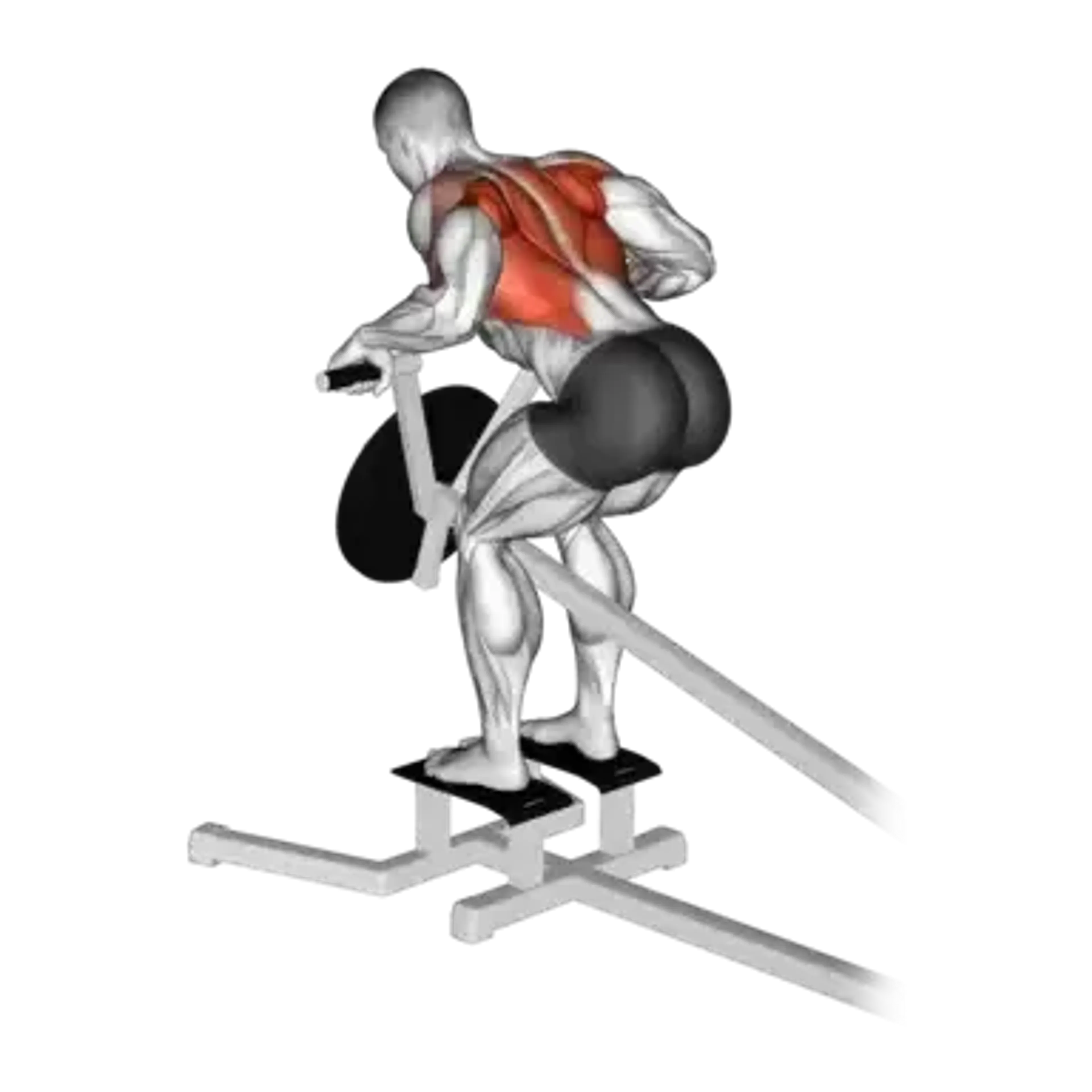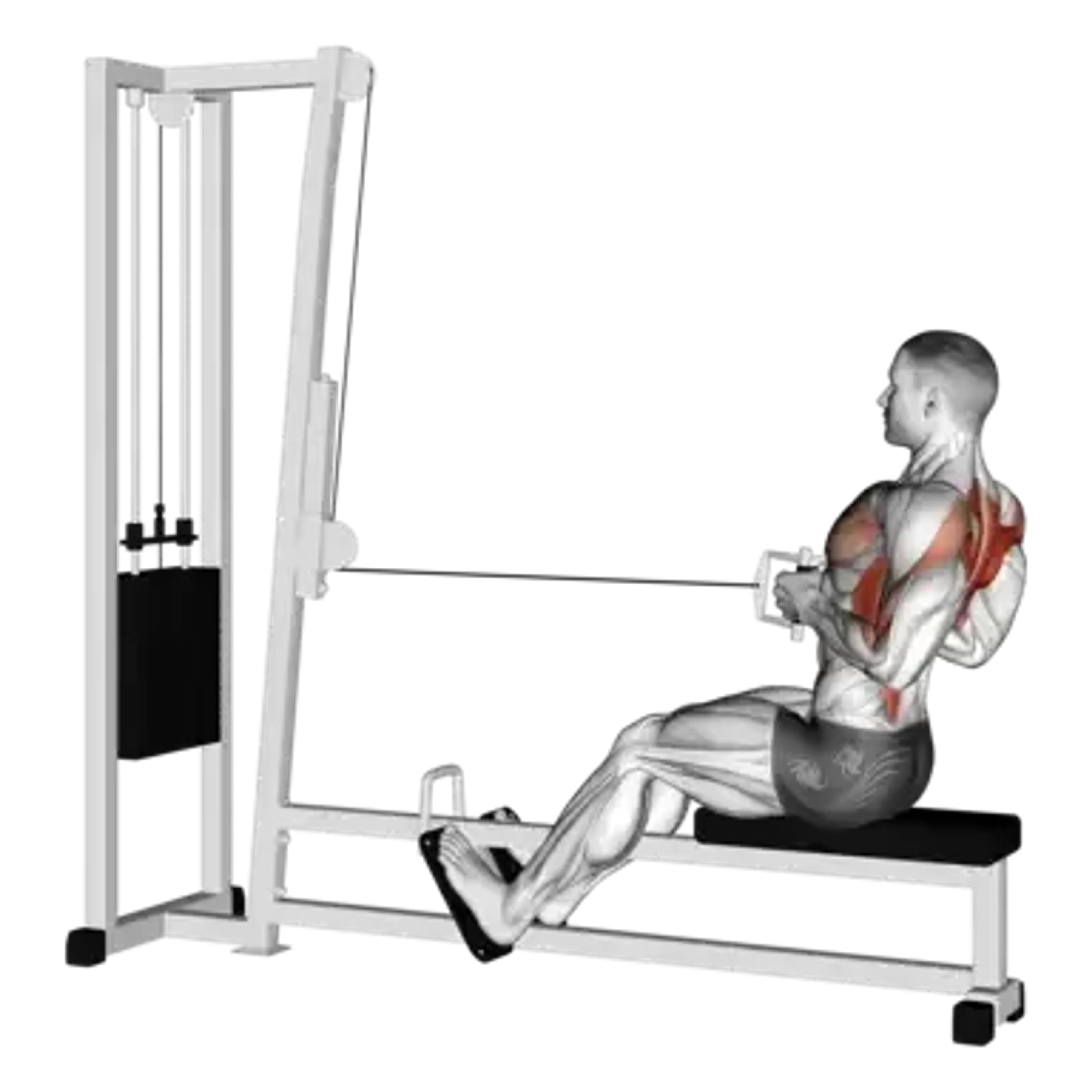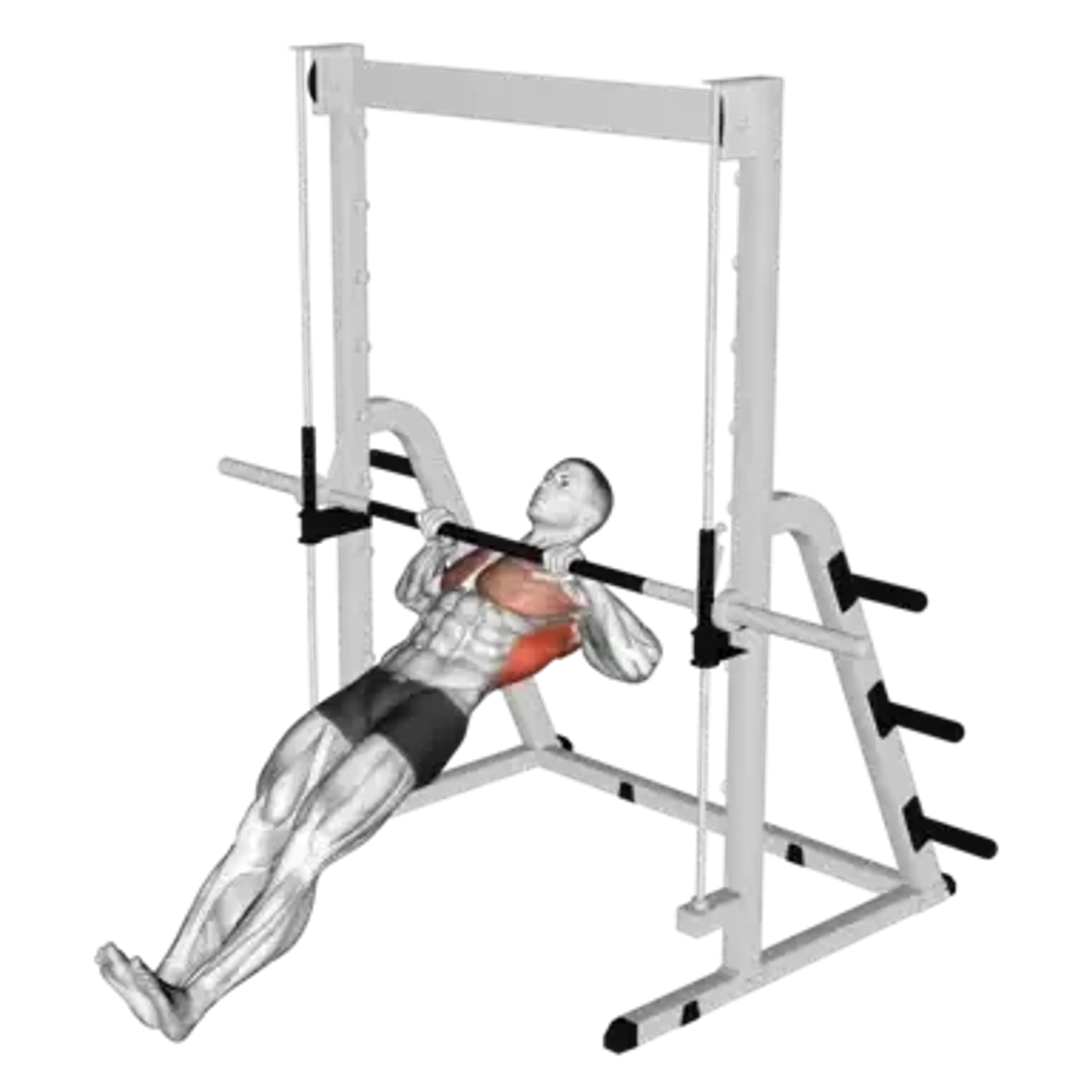Barbell Bent-Over Row

Overview
- Primary Focus:
- Back.
- Equipment:
- Barbell.
- Difficulty:
- Intermediate.
General Information
Barbell Bent-Over Row is a compound exercise that primarily works out the back muscles, including the lats, traps, and rhomboids, while also engaging the biceps as a secondary muscle group. It is an intermediate-level exercise that builds strength and muscle mass in the upper body, making it a staple in many strength training routines.
This exercise is performed by hinging at the hips and pulling a barbell toward the torso in a controlled manner. It is an effective movement for developing overall back thickness and improving posture. Proper execution ensures maximum engagement of the target muscles while minimizing strain on the lower back.
A variation of this exercise is the Barbell Bent-Over Row Reverse Grip, which involves using an underhand grip instead of the traditional overhand grip. This variation places greater emphasis on the biceps and lower lats, altering muscle activation while still maintaining the core benefits of the movement. Additionally, this movement can be performed using dumbbells, which provide more flexibility and allow for unilateral training to correct muscle imbalances.
Muscles Worked
- Latissimus Dorsi
- Primary
- Lower Trapezius
- High
- Rhomboid Major
- High
- Biceps Brachii
- Medium
- Deltoid
- Medium
- Erector Spinae
- Medium
- Teres Major
- Medium
- Brachialis
- Low
- Upper Trapezius
- Low
- Infraspinatus
- Minimal
Instructions
- Stand with your feet shoulder-width apart and grip the barbell with an overhand grip, hands slightly wider than shoulder-width.
- Hinge at your hips and slightly bend your knees, lowering your torso until it is nearly parallel to the ground.
- Keep your back straight, engage your core, and pull the barbell towards your lower ribcage.
- Squeeze your shoulder blades together at the top of the movement, then slowly lower the barbell back to the starting position.
- Repeat for the desired number of reps, maintaining control throughout the exercise.
Common Mistakes
Injuries
Barbell Bent-Over Rows are considered a medium-risk exercise due to the potential strain on the lower back if performed incorrectly.
One common injury risk is lower back strain, which can occur if the spine is not kept in a neutral position. To prevent this, ensure proper form by keeping the core engaged and avoiding excessive rounding of the back.
Another risk involves shoulder strain, particularly if the movement is performed with improper scapular control. Focusing on squeezing the shoulder blades together at the top of each rep helps mitigate this risk. Additionally, excessive weight can lead to compromised form and increased injury potential, so it is advisable to start with moderate weights and progress gradually.
Alternative Exercises

Frequently Asked Questions
- Q: Can beginners do Barbell Bent-Over Rows?
Yes, but beginners should start with lighter weights and focus on proper form before progressing to heavier loads.
- Q: How does the reverse grip variation change muscle activation?
The reverse grip (underhand) variation shifts more emphasis onto the biceps and lower lats while still targeting the back muscles effectively.
- Q: Should I use straps for Barbell Bent-Over Rows?
Straps can be helpful if grip strength is a limiting factor, but it is recommended to develop natural grip strength before relying on them.
- Q: Can I perform this exercise with dumbbells instead of a barbell?
Yes, using dumbbells allows for a greater range of motion and helps address muscle imbalances by working each arm independently.
Overview
- Primary Focus:
- Back.
- Equipment:
- Barbell.
- Difficulty:
- Intermediate.




